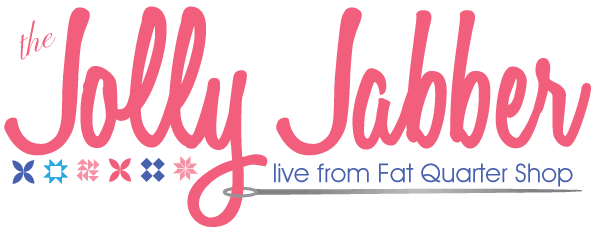On Wednesday, Rick Cohan of RJR Fabrics walked us through the making of cloth from raw greige. We left off right at the point where fabric is ready to be dyed and printed, and today he finishes off with the design process. Thanks to Rick for all the wonderful information, and enjoy this Fabric 101!
Bringing Design to Life
Fabric printing begins foremost with design. Inspirations behind our designs are drawn from a range of places, including fabrics discovered in the quilt treasury of museums, antique swatches, design studios, textile libraries, or at textile shows.  Many of our lines are created by designers who present a concept for a line, or in some cases, finished artwork (such as with Lynette Jensen, Jinny Beyer and Debbie Beaves).
Many of our lines are created by designers who present a concept for a line, or in some cases, finished artwork (such as with Lynette Jensen, Jinny Beyer and Debbie Beaves).
Once the design direction has been decided on, the individual designs are hand-painted or generated by computer. The computer can be used to enhance the design, create various options for the pattern’s repeat, downsize or enlarge the scale of the pattern and create countless color combinations. Line drawings help determine the placement and scale of motifs. This process takes 2-3 months. Once the artwork is approved, it is sent to the engravers for engraving. Tests are done using no particular colors, in order to focus on and approve the patterns. The engraving process takes 6-8 weeks. When engravings have been approved, we start placing the actual colors.
In order for a printing plant to begin printing a collection, the fabric must be struck-off for approval. The plant runs a patch (the beginning of a print) or table strike-off (TSO) which is usually between ½ yard to one yard. During this stage of the manufacturing process, strike-offs are sent back and forth from the mills to RJR for approval.  Feedback is given on how to improve the design i.e. more color, more detail, until the strike-off is a perfect match. RJR strives to create printable artwork in the beginning to avoid problems, usually only requiring 1-4 strike-offs to achieve a high caliber of color matching to the original artwork.
Feedback is given on how to improve the design i.e. more color, more detail, until the strike-off is a perfect match. RJR strives to create printable artwork in the beginning to avoid problems, usually only requiring 1-4 strike-offs to achieve a high caliber of color matching to the original artwork.
The fabric is now ready to be printed. From this point in the process of approved, finished artwork it will be about five months until fabric delivers in shops. RJR prides itself on high-quality fabrics. That’s why we work with the best printing facilities all over the world. Our first preference is printing plants located in Japan, as they excel in technology and quality. The balance of our fabrics is split between plants in Thailand and Korea. From time to time, we visit the plants to monitor progress, but a majority of the communication is done via mail.
Finally, the Printing Process!
The two most common printing methods are roller printing and screen-printing. Screen-printing can either be done through the use of flatbed screens or rotary screens. RJR uses both methods, as the design dictates the machine of choice.  For fabric designs of up to 12 colors, we use rotary screens. Up to five colors, roller printing. For 13-20 colors we use flatbed screens.
For fabric designs of up to 12 colors, we use rotary screens. Up to five colors, roller printing. For 13-20 colors we use flatbed screens.
In screen-printing, a film with design areas marked out is placed over the screen, leaving the screen open for the dye to pass through. The design is created when the print paste passes through the design areas of the film. There is a screen for each color. The difference between rotary and flatbed is that in rotary screen-printing, the nylon screen is round and placed inside a cylinder; in flatbed screen-printing, the screens are flat. In rotary screen printing the print paste is forced from the inside of the screen onto the cloth. In flatbed screen-printing, the print paste is squeegeed from the top of the screen onto the fabric. Screen-printing is the most efficient method of printing today. It can accommodate shorter yardage runs because it is faster and easier to change color combinations.
All Roads Lead to a Quilt Shop Near You…
After the fabric is printed it goes through a finishing process. Finally, it is inspected for flaws, packaged on rolls (ROT) and sent to RJR’s warehouse. Once the fabric is received, it is doubled and rolled on a bolt end, shrink-wrapped and shipped to independent fabric shops worldwide!

3 comments
I had NO idea what went into making fabric, that is just amazing! Thanks for sharing!
I have enjoyed reading about this! Its all facinating!
What an amazing process! I didn’t have a clue! Now we can all truly appreciate the fabric that comes in those wonderful boxes from The Fat Quarter Shop!!